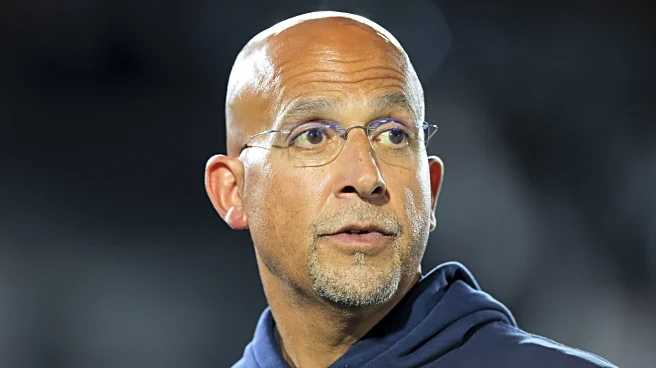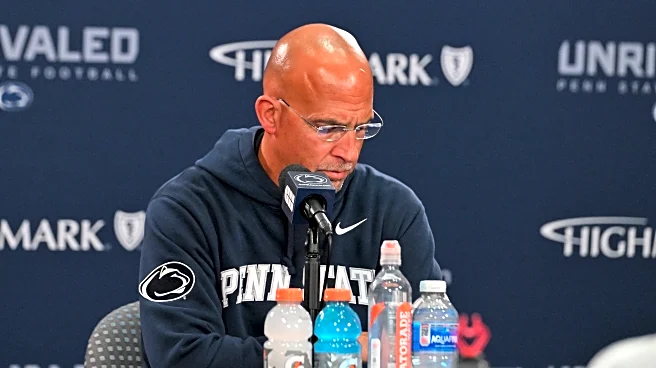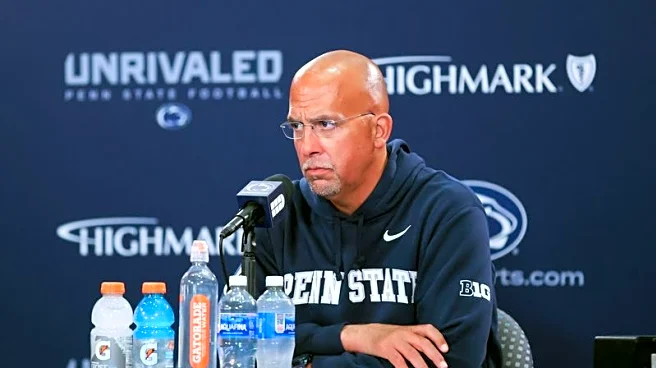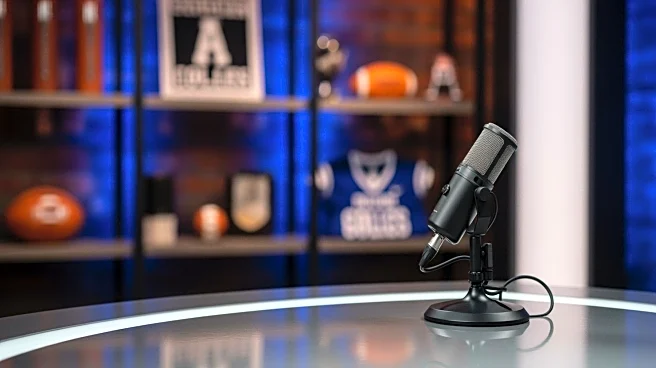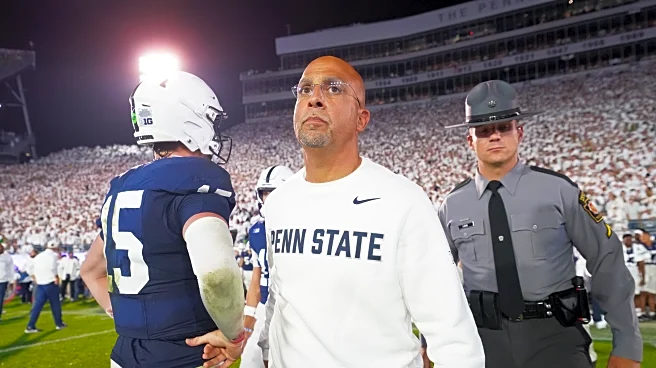What's Happening?
James Franklin, the former head coach of the Penn State Nittany Lions, publicly addressed his recent firing for the first time on ESPN's 'College GameDay'. Franklin expressed his shock upon learning of his dismissal from Athletic Director Pat Kraft, which
occurred just 15 minutes before a scheduled team meeting. The decision followed a series of three consecutive losses by the team, despite being ranked No. 2 in the preseason poll. Franklin, who led the team to the College Football Playoff semifinals last season, reflected on his 12-year tenure, emphasizing the relationships he built and the impact on the players and staff. He acknowledged the abrupt nature of the decision and the emotional challenge of leaving the team.
Why It's Important?
The firing of James Franklin marks a significant shift for Penn State's football program, which has been a prominent contender in college football under his leadership. Franklin's departure could impact the team's performance and recruitment efforts, as he was known for his strong connection with players and recruits. The decision also highlights the high-stakes environment of college sports, where performance pressures can lead to swift changes in leadership. The financial implications are notable, with Penn State reportedly owing Franklin a buyout exceeding $48 million. This move may influence other programs facing similar performance challenges, potentially leading to more frequent coaching changes in pursuit of success.
What's Next?
As Franklin processes his departure, he remains focused on future opportunities, expressing a desire to pursue a national championship elsewhere. Penn State will need to identify a new head coach who can stabilize the program and meet high expectations. The transition period may affect team morale and performance in the short term. Stakeholders, including players, recruits, and fans, will be closely watching the university's next steps. The broader college football community may also observe how Penn State navigates this change, potentially influencing coaching strategies and decisions across other programs.



